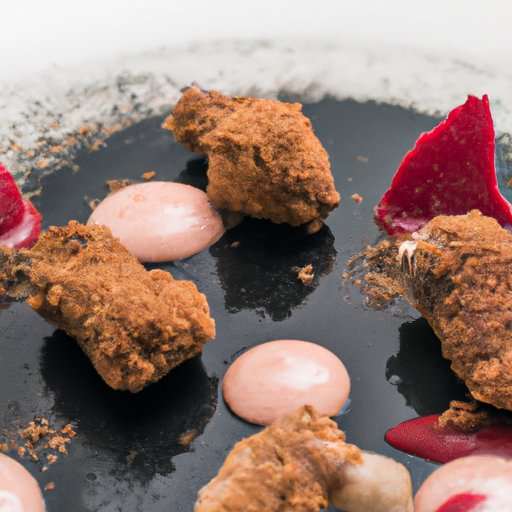Introduction
When it comes to fine dining, sweetbreads are often on the menu and have become a favorite delicacy for many food enthusiasts. However, not everyone is familiar with this unusual cut of meat. In this article, we will explore everything you need to know about sweetbreads, from their unique texture and flavor to their journey from farm to table. We’ll even dive into the debate surrounding their taste and whether they’re delicious or disgusting.
Exploring the Unique Texture and Flavor of Sweetbreads in Fine Dining
So, what exactly are sweetbreads, and what sets them apart from other meats? Sweetbreads are thymus glands from either the calf or lamb, known for their delicate texture and taste. They are also a lean cut of meat that is high in protein and low in fat.
In high-end restaurants, sweetbreads are typically prepared by poaching them in a flavorful liquid, then searing them in a hot pan to create a crispy exterior. They are often served with rich sauces or alongside complementary flavors such as mushrooms and truffles.
Some famous restaurants that incorporate sweetbreads in their dishes include Eleven Madison Park in New York City, L’Atelier de Joel Robuchon in Las Vegas, and The Fat Duck in the UK.
From Farm to Table: The Journey of Sweetbreads from Animal Offal to Culinary Masterpiece
Sweetbreads may not sound very appetizing, but their journey from farm to table is actually a fascinating process. These glands are harvested from either calves or lambs during the animal’s slaughter and are typically chilled to help preserve their delicate texture.
Once they reach the processing facility, the sweetbreads are soaked in water to remove any blood or impurities, then blanched to help remove the outer membrane. Afterward, they are trimmed to remove any excess fat or connective tissue before being packaged for shipment.
It’s essential to source sustainable meat products when it comes to sweetbreads, just like any other meat. Understanding where your food comes from and how it’s processed can help you make more informed decisions about the food you consume.
Sweetbreads 101: How to Cook and Serve This Unusual Cut of Meat
Cooking sweetbreads can be a bit intimidating, especially for those unfamiliar with this cut of meat. The key to a successful sweetbreads dish is proper preparation and cooking techniques.
Before cooking, sweetbreads have to be soaked overnight in cold water with a bit of lemon juice or vinegar to help remove any impurities and avoid bitter flavors. It’s also essential to remove any excess fat or connective tissue before cooking.
Common techniques for cooking sweetbreads include poaching, blanching, and pan-searing. Pairing sweetbreads with complementary flavors such as mushrooms, truffles, and rich sauces can help bring out the delicate flavor of the meat.
The Debate Over Sweetbreads: Are They Delicious or Disgusting? An Honest Review
When it comes to sweetbreads, opinions are divided. Some people love the unique texture and delicate flavor, while others find the thought of eating animal glands disgusting.
Common misconceptions about sweetbreads include the belief that they are brains or testicles, which couldn’t be further from the truth. While there is no denying that sweetbreads are an acquired taste for many, they remain a favorite among food enthusiasts.
Real-life experiences of people who have tried sweetbreads range from loving them to finding them bland or off-putting. Taste is subjective, and it’s up to each individual to decide whether they enjoy sweetbreads or not.
Conclusion
Sweetbreads may not be for everyone, but they have become a staple in fine dining and continue to be a popular delicacy for many food enthusiasts. Their unique texture, delicate flavor, and fascinating journey from farm to table make them an interesting cut of meat to explore.
Whether you’re a fan of sweetbreads or curious to try them for the first time, understanding where they come from and how they’re prepared can make all the difference in your dining experience.
